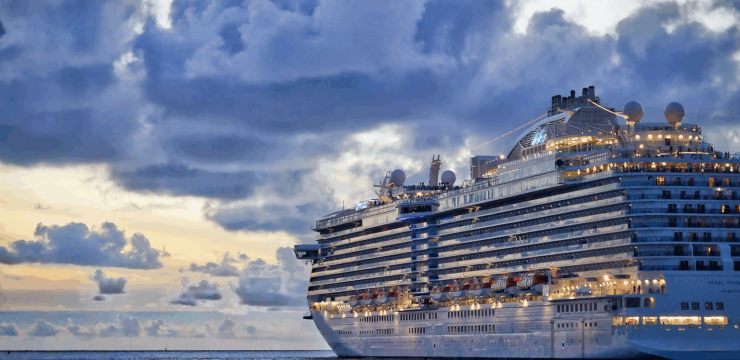If you’re someone who gets queasy on flights, there’s one piece of advice you might want to remember next time you book your seat—stay away from the back of the plane. According to a seasoned British Airways flight attendant with seven years of experience, the rear of the aircraft is where turbulence tends to hit hardest, making it the worst spot for passengers who are prone to motion sickness.

The flight attendant, speaking with Ocean Florida, explained that those wanting a smoother ride should aim for the middle section of the plane, ideally around the wings. This area experiences less movement during flight, which helps reduce the sensation of bouncing or shaking that can trigger nausea. Not only that, but she also recommends selecting an aisle seat, especially for anxious travelers or those who feel claustrophobic. An aisle seat allows for easier access to the restroom, more legroom to stretch, and a quicker path to walk around—something that can really help when you’re feeling uncomfortable or trapped.
Another often-overlooked tip is to use the air vent above your seat. The flight attendant stressed that keeping the cool air flowing can reduce the risk of airsickness by helping regulate your body temperature and providing a small but effective distraction from feelings of nausea. In addition to these tips, making use of the in-flight entertainment system can be helpful, especially for taking your mind off of how you’re feeling. While watching a screen might worsen symptoms for some, many planes now offer audio-only options like music, podcasts, or guided meditations, which can soothe anxiety and help keep motion sickness at bay.
Dr. Danielle Qing, an internal medicine specialist, echoed some of this advice, particularly when it comes to staying seated if you’re already feeling sick. She noted that keeping your head down and your eyes closed can stabilize your center of gravity, making you feel less dizzy and more grounded. Movement around the cabin during turbulence can actually make things worse, so staying still when possible is often your best bet. Interestingly, not all airplane seats are created equal when it comes to comfort, convenience, or even your view. Rosie Awad, a veteran flight attendant for Virgin Australia with over a decade of experience, revealed that her favorite seat for holiday travel is the fifth row. She explained that this row typically has a clear view of the wing, offers extra legroom, is conveniently located for deplaning, and is usually among the first to receive inflight service.
It doesn’t come with the responsibilities tied to emergency exit rows, and passengers can still store their bags under the seat in front of them. However, she did point out that being in the fifth row can sometimes make you feel like you’re being watched, since you’re facing the cabin and end up making eye contact with other passengers, which can lead to awkward staring moments. On the flip side, the worst seats, according to both her and the British Airways crew member, are in the very last row of the plane or any seats adjacent to the lavatories. Aside from the obvious downside of bathroom traffic and potential odors, these seats tend to have limited recline and are typically the last to receive service. It’s easy to see why these spots are often avoided by seasoned travelers. All in all, choosing the right seat can make a big difference in how you feel during your flight. If you’re prone to motion sickness, sticking to the middle section near the wings, opting for an aisle seat, and keeping the air vent turned on can help keep symptoms in check. Use distraction methods like audio entertainment, and try to stay seated with your head down if nausea hits. And if you can snag a spot in the fifth row, you might just enjoy a little extra comfort and convenience—without the responsibilities or unpleasant surprises that come with sitting near the lavatory. As always, a little planning goes a long way when it comes to feeling better at 30,000 feet.





